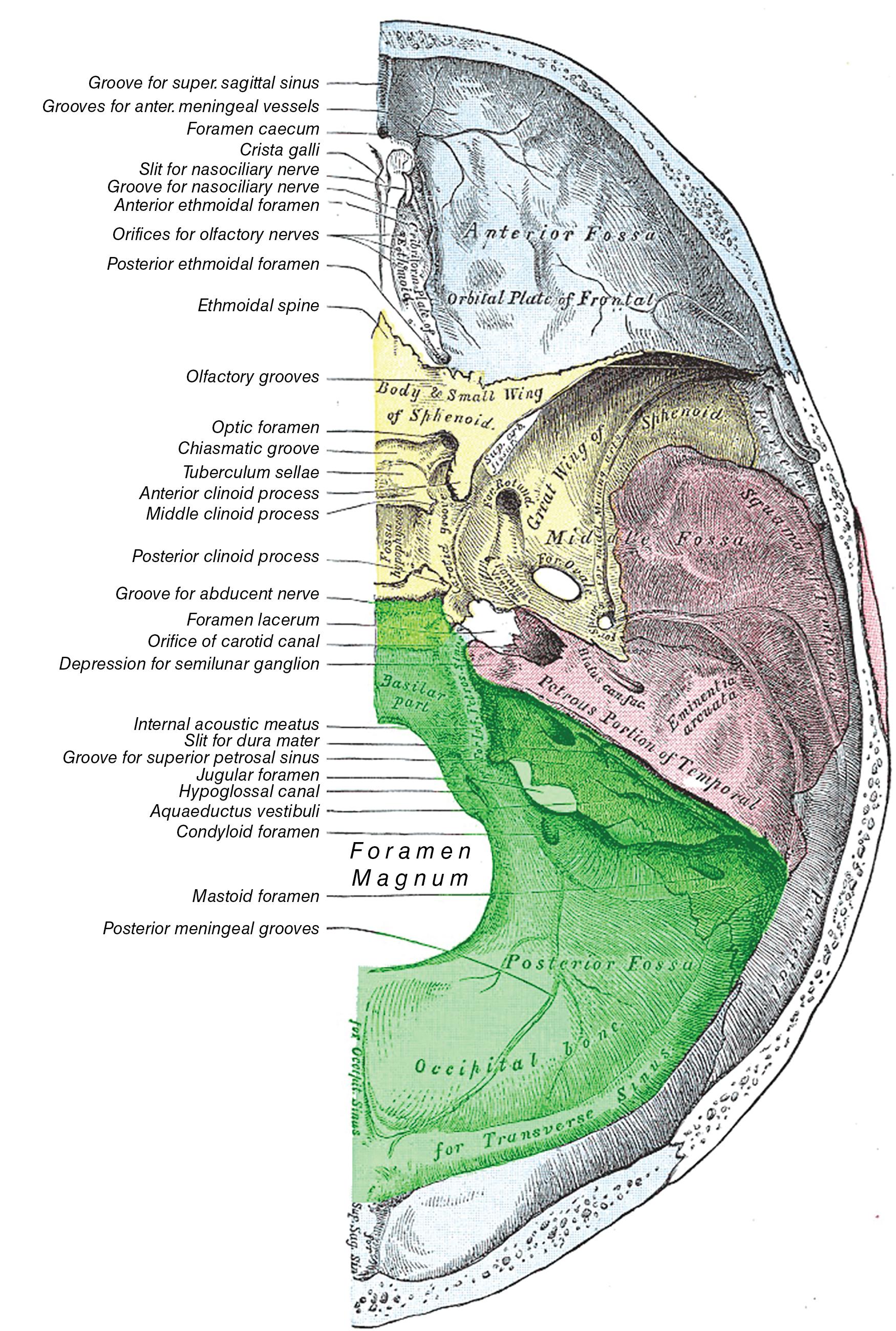Physical Address
304 North Cardinal St.
Dorchester Center, MA 02124
Cerebrospinal fluid (CSF) leaks arising from the posterior fossa are uncommon and are usually a result of abnormal communications between the subarachnoid space and air-containing spaces in the temporal bone. Causes of these abnormal communications include trauma, surgical defects, or spontaneous incidence, often in the setting of some congenital abnormality or predisposing factor. This chapter reviews the surgical anatomy of the posterior cranial fossa and discusses the relationships between posterior fossa anatomy and resultant CSF leaks. In addition, the chapter briefly reviews some of the existing literature on the incidence of and risk factors for posterior fossa CSF leaks.
The posterior cranial fossa, home to the cerebellum and brainstem, is bounded anteromedially by the dorsum sellae and clivus, anterolaterally by the petrous portion of the temporal bone, and posteriorly by the squamous portion of the occipital bone. The posterior fossa is bounded anteriorly by the tentorium, and the inferior border of the posterior fossa is composed of the squamous, condylar, and basilar portions of the occipital bone and the mastoid portion of the temporal bone ( Fig. 8.1 ).

The contents of the posterior cranial fossa, though less directly related to CSF leaks arising from the posterior fossa, are important to note. Within the posterior fossa lie multiple vital cortical and subcortical structures, including the cerebellum and brainstem. Anatomically, the cortical surfaces of the cerebellum are divided as follows: (1) the tentorial surface, or most superior surface; (2) the suboccipital surface, or most inferior surface; and (3) the petrosal surface, or most anterior surface; the cerebellar vermis is the unifying midline structure of these surfaces. The brainstem, composed of the midbrain, pons, and medulla, occupies the anterior inferior portion of the posterior cranial fossa. The fourth ventricle is interspersed between the connections of the cerebellum via the cerebellar peduncles and exits the skull base via the foramen magnum.
The posterior fossa is also home to vital arterial structures of the posterior, or vertebrobasilar, circulation as well as notable venous structures. The arterial supply within the posterior fossa, which arises from the vertebral and basilar arteries, can be divided into the upper, middle, and inferior complexes, which are in turn related to the superior cerebellar artery, anterior inferior cerebellar artery, and posterior inferior cerebellar artery. This circulatory system connects to the anterior circulation via the posterior cerebral arteries. The venous system is instead divided into (1) superficial veins, which are further subdivided based on the cerebellar surface they drain, as above; (2) deep veins that course along the fissures that lie between the brainstem and cerebellum; (3) brainstem veins that drain the midbrain, pons, and medulla; and (4) bridging veins (i.e., the vein of Galen, petrosal sinuses, and tentorial sinus). ,
The CSF spaces within the posterior cranial fossa include the fourth ventricle and the many cisterns surrounding the brainstem and cerebellum, which have been described in detail elsewhere. However, for the purpose of this text, it is important to note that the subarachnoid space, between the outer arachnoid membrane and pial layer, houses CSF within the cisterns. Defects in this subarachnoid space, either spontaneous or acquired, allow for abnormal CSF flow from these spaces through the bony channels as described later, potentially resulting in CSF leaks.
Become a Clinical Tree membership for Full access and enjoy Unlimited articles
If you are a member. Log in here